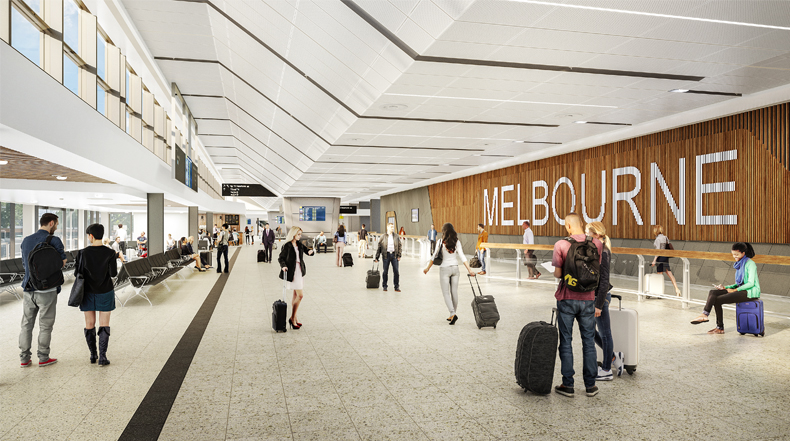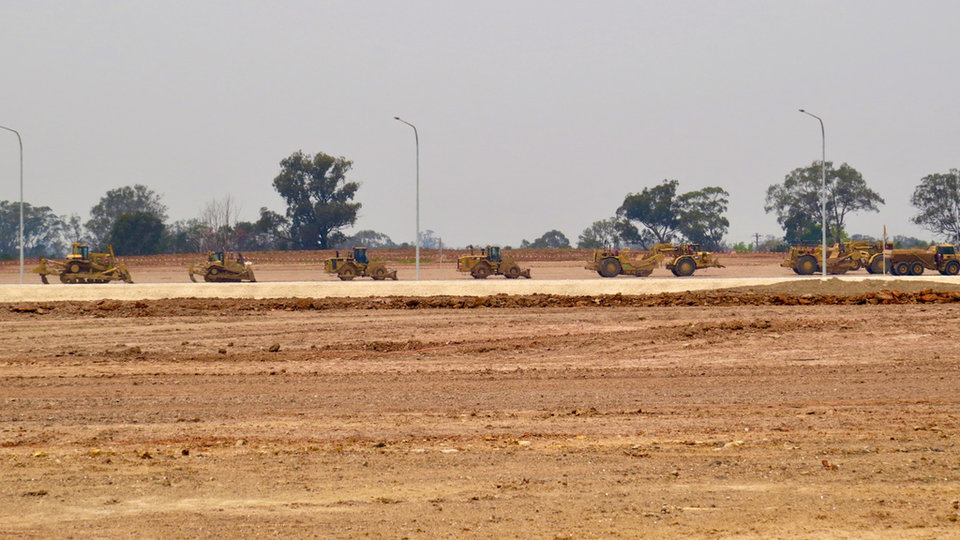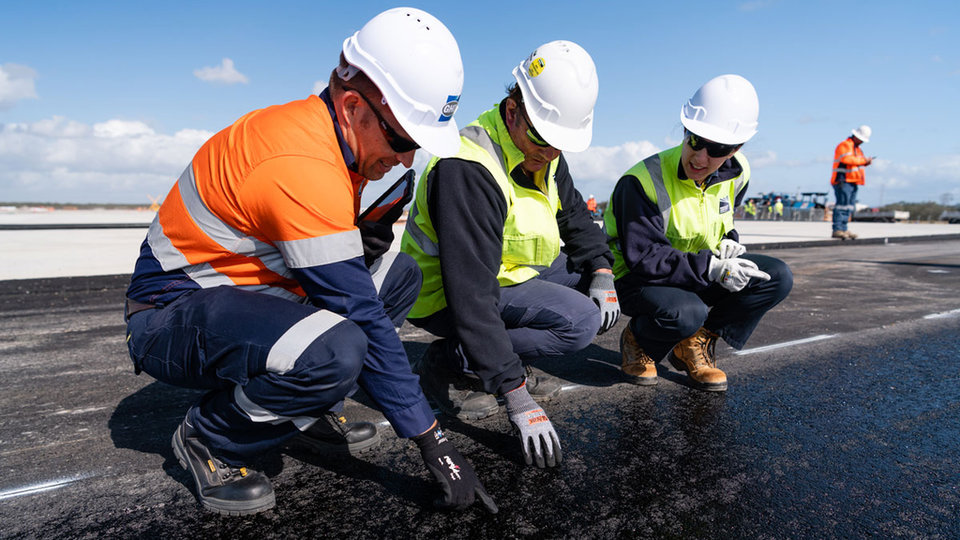Airport profile
Aviation projects taking off at airports in Australia
Australia is in the middle of an infrastructure boom, with a slew of multimillion-dollar aviation projects underway to bolster connectivity with the rest of the world. Varsha Saraogi maps the biggest aviation projects on the island continent.
Preliminary world airport traffic data released by Airports Council International (ACI) for 2017 shows that passenger traffic at the world’s 20 busiest airports increased by 5.2% year-on-year. Nearly 1.5 billion passengers passed through their terminals, representing around 17% of global passenger traffic.
With demand skyrocketing, just where are these jam-packed airports, and what trends are keeping their terminals teeming with travellers? This special feature delves deeper into some of the busiest airports from countries across the globe, and asks why passengers are flocking there in droves.
Image:
Perth Airport customer-focused technology, nature and culture projects
Perth Airport partnered with tech firm Amadeus in 2019 and will install self-service check-in machines and automated bag-drop kiosks before the end of 2020.
In addition, the airport is planning to invest up to $2.5bn over the coming decade to upgrade its international terminal, and construct a new parallel runway.
The airport also announced in October 2019 that it will set aside 15 hectares of land in its precinct to facilitate the development of a $510m Australian Biome Project to promote Western Australia’s biodiversity and aboriginal culture to international tourists.
Perth Airport’s chief executive officer Kevin Brown said in a statement that: “Perth Airport is progressively developing land that is not required for current or future aviation purposes and our estate has already become the destination of choice for a number of business operators over recent years.”
A spokesperson from the Biome project said that the project will catalyse financial growth in the area and make it a “global attraction”.
“Given its proximity to the CBD, the great transport links, and the way Perth Airport is becoming a consumer-focused retail hub, the Biome Project could be a welcome addition to Airport West,” the spokesperson added.

Perth Airport in 2017. Image: haireena / Shutterstock.com
Hobart Airport terminal expansion project
Australia’s Hobart International Airport in Tasmania will invest nearly A$200m as part of a terminal expansion project.
Phase one of the revamp of Australia's southernmost airport, which is expected to be completed by December 2020, will cost $100m and includes plans to expand the existing departures lounge and facilities, and international processing capacity.
The final two stages, which will be completed by 2030, will cost a further $100m and will include increased baggage processing facilities and further retail, food and beverage offerings.
The airport has recorded more than 5% year-on-year growth over the past four years, with 2.6 million people making their way through the terminal in the past year. The airport estimated that after the project, passenger numbers would grow to 4.5 million by 2030.

Hobart International Airport. Image: Peterfz30 / Shutterstock.com
Melbourne Airport arrival hall upgrade
Melbourne Airport undertook a significant upgrade of its International Arrivals Hall in October 2019.
Scheduled for completion by the end of 2020, the project includes a significant expansion of the waiting area with a larger link connecting Terminals 2 and 3, additional seating and escalators, and an improved outdoor taxi pick-up zone. Currently, almost 16,000 people pass through the arrivals hall daily, the airport said.
Melbourne Airport’s chief of aviation Andrew Gardiner said in a statement that the project was an attempt to “future-proof the airport for continued growth” and “create a more spacious and inviting environment for our travellers”.
In addition, the airport took the decision to alter its runway orientation from east-west to north-south in October 2019, after the plan proved to be more beneficial than an earlier decision to cater to more passengers by simply building another runway.
It found that changing the direction would provide the best outcome in terms of availability, capacity, and long-term investment.
Melbourne Airport’s chief executive officer Lyell Strambi said an east-west runway would reach maximum capacity sooner than a north-south option and would have to be closed for many days in the year due to wind restrictions.
He added that the north-south runway would “ensure that the airport keeps pace with Melbourne’s increasing popularity as an international tourism destination”.
The construction of the runway is expected to create up to 400 new jobs and lead to an increase in airport employment from the current 20,600 to 35,000 personnel. By 2043, the project is expected to bring an additional $11.48bn income to the state per year.
Melbourne Airport was one of several Australian airports to have flights cancelled as a result of smoke emitted by Australia’s wildfires in late 2019 and early 2020.

Melbourne’s Arrivals Hall expansion will be completed by the end of 2020. Image: Melbourne Airport
Western Sydney International Airport, Australia’s new gateway
Construction for the Western Sydney Airport, the second airport in Sydney began in 2018 with plans to be completed by 2026.
Currently being constructed at Badgerys Creek in the western suburbs, the new airport is expected to play a major role in boosting the economy of Western Sydney.
The government claimed that by 2035 the airport development will create 35,000 jobs, a figure expected to increase to 60,000 in the future.
The $5.3bn project, which would initially accommodate up to ten million passengers annually when it opens in 2026, will eventually be big enough to serve potentially 80 million travellers by 2060.
Once opened, the airport will have 24-hour curfew-free operations and feature vertical gardens, along with a public plaza with shops, dining and entertainment outlets, the airport’s project managers said in a statement.
Australia’s Prime Minister Scott Morrison described the project as “the largest gateway to Australia”.
Alongside resolving increasing air traffic woes, the airport company is also contributing to the local community by partnering with Liverpool City Council to improve bushland. More than 700 trees have been planted at Overette Reserve since the project began.
The airport earned the sobriquet of Nancy-Bird Walton Airport, to honour Nancy Bird Walton, the youngest Australian woman to gain a pilot's licence in 1933.

The construction site at Western Sydney Airport, shrouded in smoke during the bushfires that recently hit New South Wales. Image: B-E / Shutterstock.com
Brisbane Airport’s new runway (eight years on)
Brisbane’s new runway - costing $1.3bn - is a project that has taken a long time since it was first planned.
While work on the site began in July 2012 with plans to open in mid-2020, the initial planning began in 2005. The construction, however, was then put on hold in the wake of the global financial crisis.
The site preparation and reclamation works reached completion in 2017, with the airfield achieving the ground improvements necessary to move into the final construction stage of the project.
The airport’s new runway will be 3,300m long, 60m wide, and have 12km of associated taxiways.
It has been estimated that by 2035 the new runway will lead to the creation of 7,800 new jobs and contribute an additional $5bn in annual economic benefits to the region.
The airport is trying to compete with its southern key gateway counterparts in Sydney and Melbourne. In addition, the project would help grow annual passenger numbers to a projected 50 million by 2040, according to the airport.
Brisbane Airport is also planning to expand its existing services into Asia. It said that increasing services to Chinese cities, Jakarta, Ho Chi Minh and the Indian market would massively boost the region’s connectivity.

Brisbane’s new runway is expected to open in mid-2020. Image: Jen Dainer
Perth Airport customer-focused technology, nature and culture projects
Perth Airport partnered with tech firm Amadeus in 2019 and will install self-service check-in machines and automated bag-drop kiosks before the end of 2020.
In addition, the airport is planning to invest up to $2.5bn over the coming decade to upgrade its international terminal, and construct a new parallel runway.
The airport also announced in October 2019 that it will set aside 15 hectares of land in its precinct to facilitate the development of a $510m Australian Biome Project to promote Western Australia’s biodiversity and aboriginal culture to international tourists.
Perth Airport’s chief executive officer Kevin Brown said in a statement that: “Perth Airport is progressively developing land that is not required for current or future aviation purposes and our estate has already become the destination of choice for a number of business operators over recent years.”
A spokesperson from the Biome project said that the project will catalyse financial growth in the area and make it a “global attraction”.
“Given its proximity to the CBD, the great transport links, and the way Perth Airport is becoming a consumer-focused retail hub, the Biome Project could be a welcome addition to Airport West,” the spokesperson added.

Perth Airport in 2017. Image: haireena / Shutterstock.com
Hobart Airport terminal expansion project
Australia’s Hobart International Airport in Tasmania will invest nearly A$200m as part of a terminal expansion project.
Phase one of the revamp of Australia's southern-most airport, which is expected to be completed by December 2020, will cost $100m and includes plans to expand the existing departures lounge and facilities, and international processing capacity.
The final two stages, which will be completed by 2030, will cost a further $100m and will include increased baggage processing facilities and further retail, food and beverage offerings.
The airport has recorded more than 5% year-on-year growth over the past four years, with 2.6 million people making their way through the terminal in the past year. The airport estimated that after the project passenger numbers would grow to 4.5 million by 2030.

Hobart International Airport. Caption: Peterfz30 / Shutterstock.com
Melbourne Airport arrival hall upgrade
Melbourne Airport undertook a significant upgrade of its International Arrivals Hall in October 2019.
Scheduled for completion by the end of 2020, the project includes a significant expansion of the waiting area with a larger link connecting Terminals 2 and 3, additional seating and escalators, and an improved outdoor taxi pick-up zone. Currently, almost 16,000 people pass through the arrivals hall daily, the airport said.
Melbourne Airport’s chief of aviation Andrew Gardiner said in a statement that the project was an attempt to “future-proof the airport for continued growth” and “create a more spacious and inviting environment for our travellers”.
In addition, the airport took the decision to alter its runway orientation from east-west to north-south in October 2019, after the plan proved to be more beneficial than an earlier decision to cater to more passengers by simply building another runway.
It found that changing the direction would provide the best outcome in terms of availability, capacity, and long-term investment.
Melbourne Airport’s chief executive officer Lyell Strambi said an east-west runway would reach maximum capacity sooner than a north-south option and would have to be closed for many days in the year due to wind restrictions.
He added that the north-south runway would “ensure that the airport keeps pace with Melbourne’s increasing popularity as an international tourism destination”.
The construction of the runway is expected to create up to 400 new jobs and lead to an increase in airport employment from the current 20,600 to 35,000 personnel. By 2043, the project is expected to bring an additional $11.48bn income to the state per year.
Melbourne Airport was one of several Australian airports to have flights cancelled as a result of smoke emitted by Australia’s wildfires in late 2019 and early 2020.

Melbourne’s Arrivals Hall expansion will be completed by the end of 2020. Image: Melbourne Airport
Western Sydney International Airport, Australia’s new gateway
Construction for the Western Sydney Airport, the second airport in Sydney began in 2018 with plans to be completed by 2026.
Currently being constructed at Badgerys Creek in the western suburbs, the new airport is expected to play a major role in boosting the economy of Western Sydney.
The government claimed that by 2035 the airport development will create 35,000 jobs, a figure expected to increase to 60,000 in the future.
The $5.3bn project, which would initially accommodate up to ten million passengers annually when it opens in 2026, will eventually be big enough to serve potentially 80 million travellers by 2060.
Once opened, the airport will have 24-hour curfew-free operations and feature vertical gardens, along with a public plaza with shops, dining and entertainment outlets, the airport’s project managers said in a statement.
Australia’s Prime Minister Scott Morrison described the project as “the largest gateway to Australia”.
Alongside resolving increasing air traffic woes, the airport company is also contributing to the local community by partnering with Liverpool City Council to improve bushland. More than 700 trees have been planted at Overette Reserve since the project began.
The airport earned the sobriquet of Nancy-Bird Walton Airport, to honour Nancy Bird Walton, the youngest Australian woman to gain a pilot's licence in 1933.

The construction site at Westen Sydney Airport, shrouded in smoke during the bushfires that recently hit New South Wales. Image: B-E / Shutterstock.com
Brisbane Airport’s new runway (eight years on)
Brisbane’s new runway - costing $1.3bn - is a project that has taken a long time since it was first planned.
While work on the site began in July 2012 with plans to open in mid-2020, the initial planning began in 2005. The construction, however, was then put on hold in the wake of the global financial crisis.
The site preparation and reclamation works reached completion in 2017, with the airfield achieving the ground improvements necessary to move into the final construction stage of the project.
The airport’s new runway will be 3,300m long, 60m wide, and have 12km of associated taxiways.
It has been estimated that by 2035 the new runway will lead to the creation of 7,800 new jobs and contribute an additional $5bn in annual economic benefits to the region.
The airport is trying to compete with its southern key gateway counterparts in Sydney and Melbourne. In addition, the project would help grow annual passenger numbers to a projected 50 million by 2040, according to the airport.
Brisbane Airport is also planning to expand its existing services into Asia. It said that increasing services to Chinese cities, Jakarta, Ho Chi Minh and the Indian market would massively boost the region’s connectivity.

Brisbane’s new runway is expected to open in mid-2020. Image: Jen Dainer